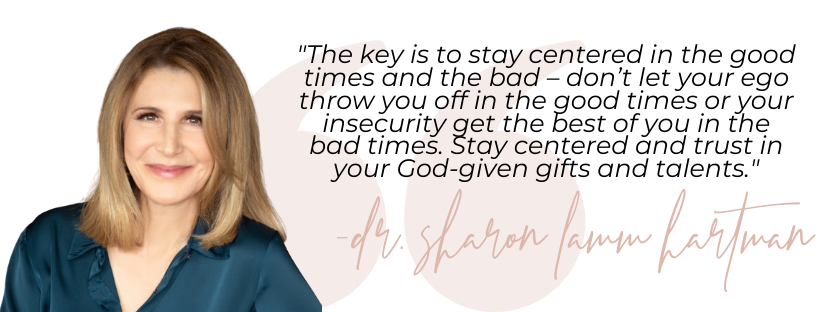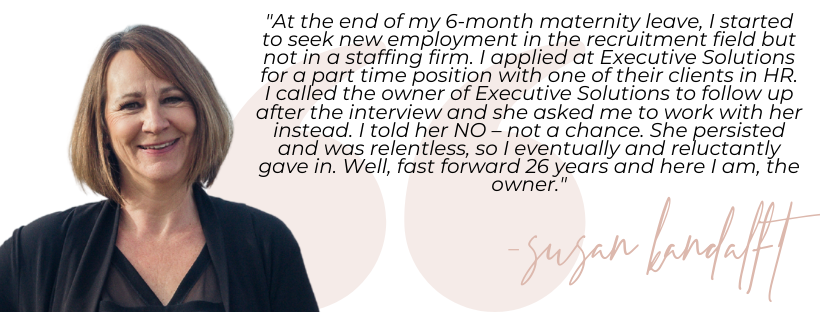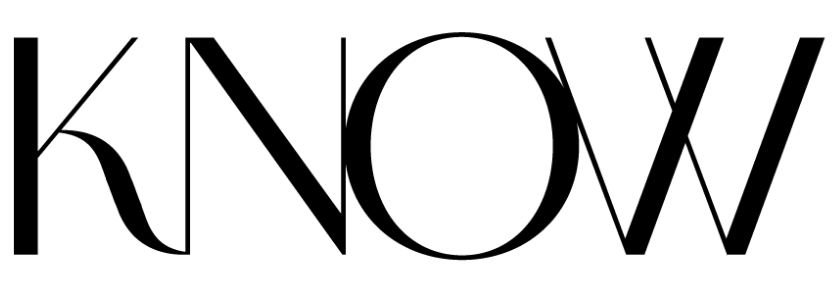Great products and services don’t grow businesses, great people do. When what was once a ‘single person with a single vision’ becomes something that has grown wings and is positioned to soar, it’s time to find your dream team.
By Julie Tingley, The KNOW Women

Is hiring the right people to take your business to the next level one of the greatest challenges for business owners? Absolutely. Can it be one of the most costly investments when it comes to onboarding, training, and growing new talent? Most certainly. However, surrounding yourself with ideal candidates that fulfill roles to support an organization’s growth and financial goals is the most important move a founder can make.
We’ve got you covered. Two of North America’s most dynamic leaders in hiring, team development, and organizational excellence weigh-in here to share their insider advice and recommendations for every business leader to build a dream team that matches the plan and model of a dream business.

“The key is to stay centered in the good times and the bad – don’t let your ego throw you off in the good times or your insecurity get the best of you in the bad times. Stay centered and trust in your God-given gifts and talents.” – Dr. Sharon Lamm-Hartman
Dr. Sharon Lamm-Hartman is Founder and CEO of Inside Out Learning, Inc. (IOL), an award‐winning global leadership, team, and organization development consulting business. She is a presentation skills coach, leadership and organization development consultant, speaker, writer, educator, wife, and mother. With over 25 years of experience, Sharon has worked across the United States and Europe as well as Beijing, Hong Kong, Singapore, and Thailand for clients such as American Express, Virgin Orbit, GE’s Leadership Development Center, ExxonMobil, E*TRADE, ARCO Chemical, AstraZeneca, Fannie Mae, Arizona Society of CPA’s, Volvo, the National Reconnaissance Office, and several small women owned business leaders. The foundation of Inside Out Learning is an award-winning model that shows businesses how to facilitate transformation in leadership and professional training programs. With her team, Sharon helps to identify and change mindsets and behaviors so that her clients can achieve exceptional results like winning billions in new business, achieving an 80% promotion rates, becoming a high performing team, or developing a desired culture.

“At the end of my 6-month maternity leave, I started to seek new employment in the recruitment field but not in a staffing firm. I applied at Executive Solutions for a part time position with one of their clients in HR. I called the owner of Executive Solutions to follow up after the interview and she asked me to work with her instead. I told her NO – not a chance. She persisted and was relentless, so I eventually and reluctantly gave in. Well fast forward 26 years and here I am, the owner.” – Susan Kandalft
Susan Kandalft is a Relationship Cultivator and Collaborator, creating connections and relationships for life. As the owner of Executive Solutions, a boutique staffing firm in Calgary (Alberta, Canada), she is committed to and genuinely believes in making solid connections and fostering long term and authentic relationships in the people business. Built on integrity and authentic care for both sides of the business, a common sense, professional yet down to earth style with a little humor and fun, Susan is extremely proud of Executive Solutions and her team for the thousands of temporary and permanent placements spanning almost 35 years. Working with many people from the 1980s to today is a true testament to her labor of love and people. Celebrating 31 years of marriage this year, a mother of 2 young adult sons, 2 adult stepchildren, 4 grandchildren and a crazy cat keeps Susan busy and enjoying life.
Tell us about your first hire. What was that process like?
Sharon: My first hire was a part-time executive assistant. At the time, I was making about 400,000K in revenue, and started to find that I was spending way too much time doing my calendar and travel arrangements. And, office organization was non-existent. I am a creative visionary so as a result, my office often looks like a cyclone hit it and has piles of paper and books all over the floor. I started to find that I could not focus and I did not like doing so much administrative work. One of my mentors asked me: “what is your hourly fee?” At the time it was $360 per hour, and they said, “how much can you get an executive assistant to help you?” Back then, the market rate was $15/ hour. So she replied, “how much more could you make if you delegated the $15/ hour work, and focused on the $360/ hour work and business development instead?” That was a great question to pose. I immediately put an ad on Craigslist for an executive assistant. I interviewed several candidates, and chose a candidate who worked part time for me for three years. I felt a sense of relief as she handled office organization, my calendar and travel. I ended up doubling my business revenue in one year just from hiring her.
Susan: My first hire here at Executive Solutions was for my first permanent Recruiter/Staffing Consultant. It’s funny how much easier it is to hire for other people’s teams, than it is to hire for your own. In those days, all jobs were posted in the Calgary Herald. As we had crafted the job description in a creative, unique and fun way (like us), we attracted a lot of candidates. Although that was our objective, it made it more arduous and challenging to sort through. Our candidate selection consisted of candidates with all levels of recruitment experience both in the staffing industry as well as with corporate experience in addition to candidates with no recruitment experience at all. After meeting many qualified and experienced candidates we ended up selecting probably the most junior candidate in the group. In my experience with working with numerous temporary and contract employees over the previous couple of years, I learned that it was easier to work with people without industry experience as it was difficult to undo bad habits. The individual we decided to hire at that time was just out of university but had worked in customer service at a supermarket throughout her university career. My thinking was that this demonstrated an excellent work ethic, loyalty, and stability to that one employer, strong customer service skills, a good memory from memorizing the item codes and well-developed people skills from dealing with all the different kinds of people. All “must have” qualities and characteristics that are required in a good recruiter. After three or four meetings, we felt confident that she clicked with us and we with her, had the same energy and sense of humor, and intuitively it just felt right. Her references attested to our observations and supported our in-house testing and assessments, and we were all very fortunate and blessed to have this employee as a valuable member of our team for 13 years.
How did you know who to hire first? Take us through any steps you took.
Sharon: This is a great question. There were actually two hires that were critical to me scaling my business to seven figures. I hired these two individuals based on my biggest pain points. Where was the greatest stress in my life? And, where was I losing sleep? One was the pain of trying to do something I am not good at (administrative organization, calendaring, travel arrangements). The other was managing our household. My mother was a stay at home Mom and somehow I did not get this gene. I don’t like to cook, clean, organize the home, and one of the first things I told my husband when we started dating is that “I don’t have a domestic bone in my body.” He laughed and said, “that is OK, my last wife was super domestic and that did not work, so that is something I don’t need.” We laughed hard. When we had our son, 16 years ago, I tried to do it all for a couple of years just with daycare. I found myself angry and miserable and it negatively impacted our marriage. I took a long hard look in the mirror and authentically said, “I am not good at this and I am miserable from trying.” So right after I hired my executive assistant, I hired a household manager/ nanny. This is when my business scaled to above seven figures. I can’t tell you the sense of relief of having our household and child cared for. It allowed me to spend quality time with my son and husband, and I was happy again. I got to focus on what I love the most: my family, my business, and myself.
The steps were: 1) Identify the pain points, 2) Be truly honest with myself about what I am good at and what I’m not so good at, 3) I put an ad on Craigslist for my executive assistant, and hired a nanny search agency to find our household manager/ nanny, 4) Spend time training them, and 5) Let go of control and truly delegate what you don’t want to do to those you hired.
When you hire for a key position what is the top quality you look for, and what is your deal breaker?
Sharon: TRUTH – my top value is truth. If I catch someone in a lie during the interview process, then I don’t go any further, because that means they could lie on the job. I need to be able to trust my employees and contractors.
Susan: The top quality is ATTITUDE. Do they have a proactive/ ‘Can Do’ attitude? You know the old adage; “hire for attitude and behavior, but train for skill”? There is truth to that. There are little clues into the candidate’s attitude and behavior. This is who the individual really is, and you need to pay attention to these clues to determine if the candidate is someone who will fit into the culture you are cultivating. These are personal attributes that are difficult to train. Attitude refers to the manner, disposition, feeling, position, etc. with regard to a person and their mindset.
What do companies like Southwest Airlines, Ritz-Carlton, and Zappos have in common? They hire for attitude and train for skill. It’s a simple mantra, but one that has a profound impact on how to successfully recruit and select new employees. Hiring for attitude is about building a distinctive workplace culture and company brand that, unlike skill sets, can’t easily be copied in the market. It’s what gives companies like those mentioned above their unique character — and competitive advantage.
What is the applicant’s track record of accomplishing new things? Do they embrace change and are they open to continuous improvement? When interviewing, inquire about initiatives that the applicant has undertaken and that have failed. How did the applicant handle failure, and what did they learn from it? The deal breaker is negativity. In going through the candidate’s background, if the candidate complains about all or most of their previous employers or co-workers, and there are signs of a pattern, that is an indication of a big red flag.
Surveys have indicated that 46 percent of new hires failed within 18 months and that 89 percent of the time, it was for attitude, not lack of technical skill. Hiring for attitude is about hiring someone for how they feel and think. The fact is a person’s attitude has a bearing on how they work, how they get along with their colleagues and superiors, and how they regard your company. Ultimately it determines their success!
When looking to start outsourcing work, what’s your biggest piece of advice?
Sharon: Define your goals, visions and plans – Clearly define the scope, responsibilities and schedule of the work as accurately and specifically as possible. Define the expectations and timelines while addressing any potential challenges or stumbling blocks. Be as upfront as possible to avoid any surprises – on either side.
Careful vendor selection – Do your research on service providers/ vendors, and don’t select solely based on price. Look for a vendor that works in your space or really understands your needs. If you are hiring an individual with a specific skillset like a graphic artist, don’t hesitate to ask for samples of their work. Do your homework and check them out. Make sure to do references from valid previous employers and/or from people that legitimately are familiar with this individual and their work.
Relationship management and Communication – For this relationship to be successful, it is important that the outsourced personnel are treated well. The hiring manager or supervisor must continue to cultivate a good relationship with them. Including checking in on their work, ensuring good morale and being available to address any issues.
Properly structured subcontract, service and vendor agreements – Get it in writing! Draw up a contract that covers your verbal agreement. It is crucial to ensure that every detail is written clearly. This will help you avoid confusion or ambiguity on both sides. It also makes sense to have a lawyer review your agreement, so you don’t end up in any legal disputes.
Susan: Seek professional help like a staffing firm of course – When working with a professional recruitment firm, your organization will benefit from industry expertise and a larger talent pool, saving time, minimizing costs, and having access to more qualified workers. There is also a reduced risk with legal responsibilities that are involved with being an employer (payroll, taxes, insurance coverage, following labor laws). From a financial and operational standpoint, hiring employees also comes with financial risks, especially if someone has to be dismissed or unexpectedly leaves. When you use a staffing firm, the agency assumes many of these liabilities for you.
In your opinion, when should you start outsourcing / hiring?
Susan: As a business owner, this can open up the opportunity to get better skilled services for less money. There are many reasons you might want to outsource or hire additional staff.
1. When you can’t keep up with the current workload. One of the most obvious times to consider outsourcing is when you and your current staff have too much on your plate and are struggling to keep up on a daily basis. Also, when you find yourself spending too much time on tasks that you don’t really enjoy or are not very good at. Your time can be better spent on growing the business or on tasks that offer better value to the business. You will enjoy your day more when you are not bogged down with time wasting or menial tasks. The business will be more efficient, and the work will get done. We tend to procrastinate when we don’t want to do something or simply don’t have the time.
2. Burn out – Also, if you find yourself working a ton of OT to stay on top of day-to-day activities and you and your team are burning out. It is time to bite the bullet and bring on additional help before you lose any of your current employees. If you and/or your staff are getting burned out, other areas of your business can begin to suffer i.e., customer service, website updates/marketing etc. This is not something you want to happen so it would be a good time to invest in either hiring an additional employee or to outsource specific tasks or responsibilities.
3. Is the task at hand a primary service or offering from your business? Is it something that someone else can do better and more efficiently? If so, don’t waste valuable time on it. Do what you do well.
4. Is it a specialized service you don’t need to handle full-time? Is it something that someone else can do better and more efficiently? Areas such as Staffing & Recruiting, Payroll, Marketing, IT, Accounting, etc.
5. Is there a competitive advantage to doing it in-house? If you’re not a tech company, it may not fit your needs to have an IT department in the building or you might have only one marketing campaign a year that requires marketing support, for instance.
6. Are the costs of the service lower than what it would take in time and manpower to get it done in-house?
7. Scale your Business – This can enable the business owner to scale their business or take on specific projects or new jobs. Another reason that you may need to bring on additional talent could be for a new or different skillset that you and your team don’t possess. This can allow your business to take on new or additional services or to enhance the talent of your team and therefore be more efficient. Outsourcing can be temporary, term/project based or permanent. Whatever suits your business needs at the time. It allows you flexibility depending on business levels and workload.
The trend in outsourcing or working with independent contractors doesn’t look like it will slow down anytime soon given the changes in the workplace and flexibility in working outside of the office. It’s something you should consider using to your advantage.
When should you use a contractor vs. an employee?
Susan: All businesses are different but there are times when it makes the most sense to hire an independent contractor vs an employee.
When to hire a contractor:
You require expertise to handle specific tasks with a specialized skillset. If you need highly skilled, short term team members who can perform with minimal supervision. It can be a great way to find someone with a niche set of skills.
Uncertain demand and workflow can be challenging to manage. Hiring a contractor or temporary employee can provide you with flexibility in your staffing requirements.
If you are not set up for payroll or don’t have the time to invest in employees. It is easier to hire contractors over employees because there is less work and responsibility involved. When a business has employees, they need to abide by employment laws, keep adequate records, provide tools or equipment for the job, train employees and do performance reviews etc.
Pros of hiring a contractor:
Staffing flexibility – With a contractor, you can bring them on board when you need them. Since you’re not paying them as an employee or treating them as an employee, you have flexibility with staffing and scheduling. The work you need to be done may only require a short time and have a very defined beginning and end. It doesn’t make sense to take on the financial and time burdens of hiring an employee unless you anticipate having multiple similar projects with work that will go on indefinitely. It’s also easier to terminate a contractor when the work is completed or if they’re not working out. There are also less legal implications or liabilities.
Less overhead – Hiring a contractor can save you money on overhead especially if they are working from a location other than your office. They can provide their own tools, technology, and equipment to complete the work.
Reduced payroll costs and benefit costs – contractors are responsible for their own payroll source deductions, WCB, OT, vacation pay, and benefits. Full-time, permanent employees need to be on a set payment schedule, regardless of your revenue for that month. These costs can increase your payroll and benefit amounts by 20 – 50% per year.
Reduced training expenses – When you hire a contractor, you expect to bring a specialist on board who doesn’t require a lot of training. The contractor should be skilled enough to hit the ground running.
Improves company focus – By outsourcing less important tasks, you increase the company’s focus on tasks that are deemed more vital.
Supervision is minimal – Independent contractors are independent. A lot of contractors work remotely these days, especially in creative roles. Your best bet is to set up a communication plan prior to hiring to make sure you’re both on the same page. If you require that a contractor to be on-site, however, you can include them in meetings or check-ins as you would your full-time employees. However, if you’re more of a micromanager and can’t trust a contractor 100%, contracting an employee might not be the best option.
Cons of hiring a contractor:
Loyalty – A contractor does not have as much loyalty to your company as permanent employees, which means they may not prioritize your work if they are doing several different jobs at the same time. It can be difficult to foster team and company loyalty from contractors. Depending on the relationship, sometimes there is a need to draw a firm line between employee and contractor. Workers with independent contractor status are not invited to outside company functions such as motivational seminars, team-building exercises, celebratory events and developmental training. This kind of separate treatment can easily make contractors view their work as just a job, and not worth expending any effort beyond the minimum required.
Missing out on talent – Some people are put off by roles that are described as contract or temporary as they do not have the same security as a permanent role and are not as financially stable. Also, typically they’re not eligible for the same benefits and vacation pay etc.as permanent employees and therefore may be less interested in accepting this type of employment which might make you lose out on eligible candidates.
Inconsistent Availability – Contractors are free to move on to their next gig with little or no notice. You might need them to come back to complete the project at a later date or for another project, and they might not be available. Also, it can be harder to communicate and get hold of a contractor as they may not work regular office hours and may be involved in projects with other companies at the same time as yours. This can be alleviated when working with a staffing firm as they would act as the go-between.
Higher turnover – You may need to replace contractors and look for new talent as they move on to their next gig. Having multiple contractors coming and going on the project can reduce the quality of the work or produce inconsistent quality.
Limited Company or Product Knowledge – As contractors are typically only with your company for a limited period of time, their knowledge of your company and product will be limited. Although they can do the necessary research to complete a project for you, they will lack the insider brand knowledge that can only be learned over a longer time with the company.
When to hire an employee:
A permanent employee is a better choice if you are expanding your business and need more staff to handle the additional workload. Also, you may need to hire an additional employee if a new or additional role is created or if a current permanent employee leaves your employment.
Pros of Hiring an Employee:
Employee engagement – Dedication and commitment is usually stronger. Permanent employees tend to be more interested in your company and will often be more willing to go the extra mile.
Stability: With an employee, there’s often less turnover and it’s easier to build a stable, loyal and efficient team. There is also typically more job security for the employee which is appealing and therefore they will stay.
Employee availability – An employee typically works a set schedule, and you know when to expect them.
Loyalty – Comfort in knowing that the employee is going to work exclusively for your company as they don’t typically also work for the competition.
Corporate Culture – It is easier to build a stronger culture with a cohesive, team-oriented, stable team of permanent employees.
More control – You can only control a contractor to a certain degree, but with an employee you’re able to set their schedule while telling them exactly how they should work.
Employee Growth – One of the biggest benefits of hiring full-time employees is that they have more potential for career development and the ability to grow with your company. Long-term employees buy into the organizational culture, develop company-specific skills, and can be groomed for upper management positions while enjoying job security in the process. Permanent employees help companies create long-term growth. Full-time employees are more loyal, feel more valued, and often less stressed. That helps them deliver better long-term results for your business.
Cons of hiring an employee:
Cost – Permanent staff are a long-term investment for a business; as well as paying salary, government payroll source deductions, benefits insurance and covering equipment costs, you will also need to provide training, support for career development, and regular performance updates.
Difficulty & Cost of Termination – Permanent employment contracts are harder to terminate if a new staff member isn’t working out.
Recruitment Expense – The process of recruiting permanent employees can sometimes be expensive if you are doing all of the sourcing and screening yourself. Another reason to use a professional staffing and recruitment firm.
Less Specific Skills – You may end up with a team of staff with more general skills and miss out on hiring employees with specific talents and skillsets.
Do you have a recommended communication tool for teams?
Sharon: Yes, we use Sharepoint and Google Drive and Chat in our business. However the best communication tool that we use and also teach in our leadership and professional development programs is “The Ladder of Inference” which was invented by Chris Argyris. I put together a process called clearing the ladder that keeps conflicts and misunderstandings clear on a team. We as human being make meaning when we see something or hear something. We often make assumptions about what we saw or heard. Then we take action on those assumptions before checking the assumption out. So if someone says “I am up a ladder” or “are you up a ladder” then it means I am making an assumption about something I saw or heard or I am wondering if you are making an assumption because you seem frustrated. The ladder clearing process then allows the person who is “up a ladder” to share what they saw or heard (the data), plus the assumption they are making, and then ask whether the assumption they are making is accurate. The receiver of the ladder, first paraphrases what they heard, so the sender feels heard. They then respond to the question of whether the assumption is accurate and they have an open and honest dialog. At the end of the dialog they agree on what needs to happen in the future to avoid the same thing from happening again. For example, if someone does not get a report in on time, then they may work out an agreement to share that they might be late at least 48 hours in advance of the due date or ask for help prioritizing so they can get the report in on time. I highly recommend that all teams adopt the ladder clearing process, as I have seen relationships end and employees leave organizations when ladders are not kept clear.
What’s been your biggest challenge with managing growth?
Sharon: My biggest challenge has been having the resources to follow up with all the sales leads we have. The majority of our business comes from expanding within our current clients or “bluebirds” who are people who used to work at our clients, and they experienced our exceptional programs, and leave and go to a new company. We have so many bluebird relationships and not enough sales people to follow up on all of them. So even as I write this, I am deciding to hire an additional sales professional, so effective follow-up can happen. There may be someone out there willing to work for a higher commission and low to no hourly fee.
MORE STORIES
Foolproof Vanilla Flan
Foolproof Vanilla FlanCiji Castro | Domestic Gourmet | KNOW Tampa All products featured on Domestic Gourmet are independently selected. I may earn an affiliate commission when you buy through links on this site. Making flan in my family is like a source of pride...
Empowering Women Through Strength Training: Unleashing Your Inner Power
Empowering Women Through Strength Training: Unleashing Your Inner PowerMargherita Riello Bell | Bell Fitness | KNOW PhoenixStrength training is often misunderstood by many women who fear that it will bulk them up or is unnecessary in their fitness routine. However,...



